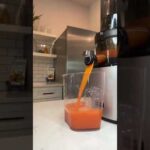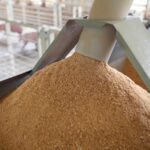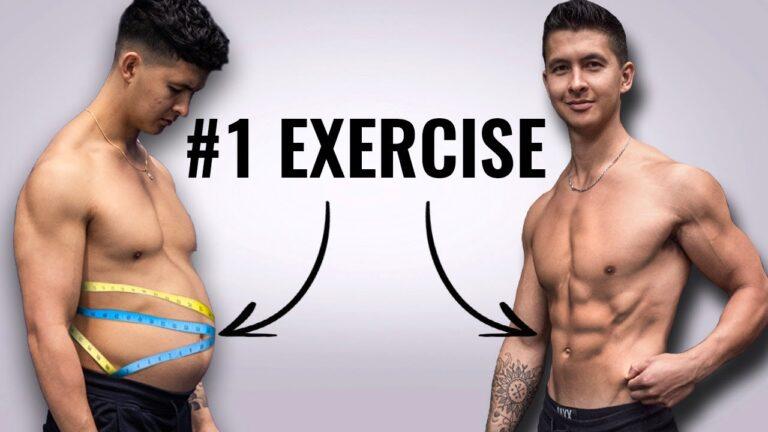Swipe to Sustain: Exploring Consumer Behaviors in Organic Food Purchasing via Instagram Social Commerce 1 2 * Sustainability 2024 , 16 (6), 2338; https://doi.org/10.3390/su16062338 (registering DOI) Abstract : 1. Introduction 2. Literature Review 3. Development of Hypotheses and Research Model H1a. H1b. H2a. H2b. H3a. H3b. H4a. H4b. H5a. H5b. H6a. H6b. H7a. H7b. H8a. H8b. H9a. H9b. H10a. H10b. H11a. H11b. H12a. H12b. H13. H14. H15. 4. Research Methodology 4.1. Research Design 4.2. Qualitative Stage 4.3. Quantitative Stage 4.4. Measurement Development 4.5. Data Collection 5. Data Analysis and Results 5.1. Measurement Model 5.2. Common Method Bias (CMB) 5.3. Structural Model Analysis 2 ), (4) the assessment of effect size (f 2 ), and (5) the assessment of predictive relevance (Q 2 ). 2 = 0.009), FC (f 2 = 0.016), HM (f 2 = 0.017), SI (f 2 = 0.045), and SMIEs (f 2 = 0.104) contribute to the R 2 value of PI, explaining a relatively small-to-moderate proportion of the variance [122]. 2 = 0.085), RERs (f 2 = 0.103), and SMIEs (f 2 = 0.428) demonstrate a moderate to large degree of explanatory power with respect to the R 2 value of SCT [122]. 2 = 0.052) and SMIEs (f 2 = 0.081) hold a moderate effect size, whereas PI (f 2 = 0.347) demonstrated a large effect size [122]. 2 values from 66.8% to 66.3% after removing the control variables shows that these variables accounted for only the marginal variance in customers’ Instagram-based purchasing behaviors. Table 4 provides an informative overview of the results obtained from the path analysis in the current research. 2 value, which is used to assess the predictive relevance [99], can be determined using a blindfolding procedure [108]. The results of this research indicate that it holds a strong predictive relevance for the variables, with Q 2 values of 0.484, 0.632, and 0.525 for PI, SCT, and PB, respectively [108]. Moreover, the R 2 coefficients of PI (0.513), SCT (0.643), and PB (0.668) were all found to be satisfactory [108]. Accordingly, this study’s model has a robust ability to explain customers’ trust, intentions, and behaviors in the context of purchasing organic food products through Instagram social commerce. 5.4. Mediation Effects 6. Discussion of Key Findings 7. Implications 7.1. Academic Implications 2 value equal to 66.8%. Accordingly, compared to the UTAUT-2, the developed model made a significant improvement in the variance explained in individuals’ behaviors (from 52% to 66.8%). Accordingly, the results obtained from this research provide fresh perspectives on the UTAUT-2′s applicability, opening up new opportunities for further social commerce studies. 7.2. Practical Implications 7.3. Social Implications 8. Limitations and Future Research Author Contributions Funding Institutional Review Board Statement Informed Consent Statement Data Availability Statement Conflicts of Interest References Amiraslani, F.; Dragovich, D. Food-energy-water nexus in Iran over the last two centuries: A food secure future? Energy Nexus 2023 , 10, 100189. [Google Scholar] [CrossRef] Shirzad, H.; Barati, A.; Ehteshammajd, S.; Goli, I.; Siamian, N.; Moghaddam, S.M.; Pour, M.; Tan, R.; Janečková, K.; Sklenička, P.; et al. Agricultural land tenure system in Iran: An overview. Land Use Policy 2022 , 123, 106375. [Google Scholar] [CrossRef] Barati, A.; Azadi, H.; Movahhed Moghaddam, S.; Scheffran, J.; Dehghani Pour, M. Agricultural expansion and its impacts on climate change: Evidence from Iran. Environ. Dev. Sustain. 2023 , 26, 5089–5115. [Google Scholar] [CrossRef] Statista. Agriculture—Iran. 2023. Available online: https://www.statista.com/outlook/io/agriculture/iran (accessed on 24 January 2024). TCCIMA. Iran Agriculture Sector Guide, 2nd ed.; Agriculture; Tehran Chamber of Commerce, Industries, Mines, and Agriculture (TCCIMA): Tehran, Iran, 2023; pp. 1–72. [Google Scholar] ILO. Employment in Agriculture (% of Total Employment) (Modeled ILO Estimate)—Iran, Islamic Rep.; International Labour Organization: Geneva, Switzerland, 2021. [Google Scholar] Najafabadi, M.M.; Mirzaei, A.; Laskookalayeh, S.S.; Azarm, H. An investigation of the relationship among economic growth, agricultural expansion and chemical pollution in Iran through decoupling index analysis. Environ. Sci. Pollut. Res. 2022 , 29, 76101–76118. [Google Scholar] [CrossRef] Savari, M.; Yazdanpanah, M.; Rouzaneh, D. Factors affecting the implementation of soil conservation practices among Iranian farmers. Sci. Rep. 2022 , 12, 8396. [Google Scholar] [CrossRef] Mohammadi, S.; Balouei, F.; Haji, K.; Khaledi Darvishan, A.; Karydas, C.G. Country-scale spatio-temporal monitoring of soil erosion in Iran using the G2 model. Int. J. Digit. Earth 2021 , 14, 1019–1039. [Google Scholar] [CrossRef] FAO. Global Soil Partnership; FAO: Rome, Italy, 2024. [Google Scholar] Ali, A.A.; Al-Abbadi, A.M.; Jabbar, F.K.; Alzahrani, H.; Hamad, S. Predicting Soil Erosion Rate at Transboundary Sub-Watersheds in Ali Al-Gharbi, Southern Iraq, Using RUSLE-Based GIS Model. Sustainability 2023 , 15, 1776. [Google Scholar] [CrossRef] Clark, S. Organic Farming and Climate Change: The Need for Innovation. Sustainability 2020 , 12, 7012. [Google Scholar] [CrossRef] Niemiec, M.; Chowaniak, M.; Sikora, J.; Szeląg-Sikora, A.; Gródek-Szostak, Z.; Komorowska, M. Selected Properties of Soils for Long-Term Use in Organic Farming. Sustainability 2020 , 12, 2509. [Google Scholar] [CrossRef] Dan, I.S.; Jitea, I.M. Barriers and Levers in the Development of the Value Chain of Organic Vegetables in Romania. Sustainability 2023 , 15, 12321. [Google Scholar] [CrossRef] Bursić, V.; Vuković, G.; Cara, M.; Kostić, M.; Stojanović, T.; Petrović, A.; Puvača, N.; Marinković, D.; Konstantinović, B. Plant Protection Products Residues Assessment in the Organic and Conventional Agricultural Production. Sustainability 2021 , 13, 1075. [Google Scholar] [CrossRef] Pânzaru, R.L.; Firoiu, D.; Ionescu, G.H.; Ciobanu, A.; Medelete, D.M.; Pîrvu, R. Organic Agriculture in the Context of 2030 Agenda Implementation in European Union Countries. Sustainability 2023 , 15, 10582. [Google Scholar] [CrossRef] Gamage, A.; Gangahagedara, R.; Gamage, J.; Jayasinghe, N.; Kodikara, N.; Suraweera, P.; Merah, O. Role of organic farming for achieving sustainability in agriculture. Farming Syst. 2023 , 1, 100005. [Google Scholar] [CrossRef] Calabro, G.; Vieri, S. Limits and potential of organic farming towards a more sustainable European agri-food system. Br. Food J. 2024 , 126, 223–236. [Google Scholar] [CrossRef] Muhammad, D.R.A.; Zaman, M.Z.; Ariyantoro, A.R. Chapter 7—Sustainable materials and infrastructures for the food industry. In Sustainable Development and Pathways for Food Ecosystems; Accorsi, R., Bhat, R., Eds.; Academic Press: Cambridge, MA, USA, 2023; pp. 147–182. [Google Scholar] IFOAM. Organic Agriculture and Its Benefits for Climate and Biodiversity; IFOAM: Bruxelles, Belgium, 2022; pp. 1–16. [Google Scholar] Skinner, C.; Gattinger, A.; Krauss, M.; Krause, H.-M.; Mayer, J.; Van der Heijden, M.G.A.; Mäder, P. The impact of long-term organic farming on soil-derived greenhouse gas emissions. Sci. Rep. 2019 , 9, 1702. [Google Scholar] [CrossRef] [PubMed] Maleksaeidi, H.; Memarbashi, P. Barriers of environmentally-friendly entrepreneurship development in Iran’s agriculture. Environ. Dev. 2023 , 46, 100831. [Google Scholar] [CrossRef] Li, R.; Lee, C.-H.; Lin, Y.-T.; Liu, C.-W. Chinese consumers’ willingness to pay for organic foods: A conceptual review. Int. Food Agribus. Manag. Rev. 2020 , 23, 173–188. [Google Scholar] [CrossRef] Yilmaz, B. Factors Influencing Consumers’ Behaviour towards Purchasing Organic Foods: A Theoretical Model. Sustainability 2023 , 15, 14895. [Google Scholar] [CrossRef] Bazhan, M.; Shafiei Sabet, F.; Borumandnia, N. Development and validation of a questionnaire to examine determinants of consumer intentions to purchase organic food. BMC Nutr. 2023 , 9, 74. [Google Scholar] [CrossRef] Yazdanpanah, M.; Tajeri Moghadam, M.; Javan, F.; Deghanpour, M.; Sieber, S.; Falsafi, P. How rationality, morality, and fear shape willingness to carry out organic crop cultivation: A case study of farmers in southwestern Iran. Environ. Dev. Sustain. 2022 , 24, 2145–2163. [Google Scholar] [CrossRef] Schlatter, B.; Trávníček, J.; Willer, H. The World of Organic Agriculture Statistics and Emerging Trends 2023, 3rd ed.; FiBL, IFOAM—Organics International: Frick, Switzerland, 2023; pp. 31–133. [Google Scholar] Kheirollahi, H.; Taghizadeh, H. Prioritizing the factors affecting the promotion of customers’ attitude towards organic food products by employing the technique of fuzzy AHP. Int. J. Nonlinear Anal. Appl. 2023 , 14, 75–89. [Google Scholar] [CrossRef] Tohidi, A.; Mousavi, S.; Dourandish, A.; Alizadeh, P. Organic food market segmentation based on the neobehavioristic theory of consumer behavior. Br. Food J. 2023 , 125, 810–831. [Google Scholar] [CrossRef] Babajani, A.; Muehlberger, S.; Feuerbacher, A.; Wieck, C. Drivers and challenges of large-scale conversion policies to organic and agro-chemical free agriculture in South Asia. Int. J. Agric. Sustain. 2023 , 21, 2262372. [Google Scholar] [CrossRef] Hagolani-Albov, S.E.; Ehrnström-Fuentes, M. The REKO model: Facebook as a platform for food system reconnection. Int. J. Food Des. 2023 , 8, 61–87. [Google Scholar] [CrossRef] Sezavar, A.N.M. Review of Importance of Utilizing Social Messengers (Telegram) and e-Commerce Advantages to Promote the Sale of Farming Companies in Iran. Master’s Thesis, The Polytechnic University of Milan, Milan, Italy, 2020. [Google Scholar] Lin, J.; Guo, J.; Turel, O.; Liu, S. Purchasing organic food with social commerce: An integrated food-technology consumption values perspective. Int. J. Inf. Manag. 2020 , 51, 102033. [Google Scholar] [CrossRef] Hajli, N.; Sims, J.; Zadeh, A.H.; Richard, M.-O. A social commerce investigation of the role of trust in a social networking site on purchase intentions. J. Bus. Res. 2017 , 71, 133–141. [Google Scholar] [CrossRef] Attar, R.W.; Almusharraf, A.; Alfawaz, A.; Hajli, N. New Trends in E-Commerce Research: Linking Social Commerce and Sharing Commerce: A Systematic Literature Review. Sustainability 2022 , 14, 16024. [Google Scholar] [CrossRef] Dincer, C.; Dincer, B. Social Commerce and Purchase Intention: A Brief Look at the Last Decade by Bibliometrics. Sustainability 2023 , 15, 846. [Google Scholar] [CrossRef] Marolt, M.; Zimmermann, H.-D.; Pucihar, A. Social Media Use and Business Performance in SMEs: The Mediating Roles of Relational Social Commerce Capability and Competitive Advantage. Sustainability 2022 , 14, 15029. [Google Scholar] [CrossRef] Chevalier, S. Social Commerce Revenue Worldwide from 2022 to 2030. 2023. Available online: https://www.statista.com/statistics/1231944/social-commerce-global-market-size/ (accessed on 29 December 2023). Subriadi, A.P.; Kusuma Wardhani, S.A. Survivability Scenario of SMEs in Facing COVID-19 Crisis Based on the Social Commerce Framework. Sustainability 2022 , 14, 3531. [Google Scholar] [CrossRef] Sheikh, Z.; Ghaffar, A.; Islam, T.; Sheikh, A. Consumers’ acceptance of social commerce during COVID-19 lockdown. J. Glob. Sch. Mark. Sci. Bridg. Asia World 2023 , 33, 210–230. [Google Scholar] [CrossRef] Elshaer, I.A.; Alrawad, M.; Lutfi, A.; Azazz, A.M.S. Social commerce and buying intention post COVID-19: Evidence from a hybrid approach based on SEM—fsQCA. J. Retail. Consum. Serv. 2024 , 76, 103548. [Google Scholar] [CrossRef] Bazi, S.; Attar, R.W.; Adam, N.A.; Hajli, N. Consumers’ social self-identity drivers on social commerce platforms-based food and beverage. Br. Food J. 2023 , 125, 3050–3068. [Google Scholar] [CrossRef] Shiri, N. Attitude toward organic agribusiness: An approach to developing sustainable business. Br. Food J. 2021 , 123, 3265–3276. [Google Scholar] [CrossRef] Tariq, A.; Wang, C.; Tanveer, Y.; Akram, U.; Akram, Z. Organic food consumerism through social commerce in China. Asia Pac. J. Mark. Logist. 2019 , 31, 202–222. [Google Scholar] [CrossRef] Melovic, B.; Cirovic, D.; Dudic, B.; Vulic, T.B.; Gregus, M. The Analysis of Marketing Factors Influencing Consumers’ Preferences and Acceptance of Organic Food Products—Recommendations for the Optimization of the Offer in a Developing Market. Foods 2020 , 9, 259. [Google Scholar] [CrossRef] Tajpour, M.; Hosseini, E.; Ratten, V.; Bahman-Zangi, B.; Soleymanian, S.M. The Role of Entrepreneurial Thinking Mediated by Social Media on the Sustainability of Small and Medium-Sized Enterprises in Iran. Sustainability 2023 , 15, 4518. [Google Scholar] [CrossRef] Techrasa. Market Report of Instagram Stores and Social Commerce Industry in Iran 1401. Report Number 1401. 2022. Available online: https://rb.gy/wifx5v (accessed on 17 April 2023). Naseri, A.; Kayvanfar, V.; Sheikh, S.; Werner, F. Social Media’s Role in Achieving Marketing Goals in Iran during the COVID-19 Pandemic. Soc. Sci. 2022 , 11, 512. [Google Scholar] [CrossRef] Herzallah, D.; Muñoz-Leiva, F.; Liébana-Cabanillas, F. Selling on Instagram: Factors that Determine the Adoption of Instagram Commerce. Int. J. Hum.–Comput. Interact. 2022 , 38, 1004–1022. [Google Scholar] [CrossRef] Ahmadi, I.; Waltenrath, A.; Janze, C. Congruency and Users’ Sharing on Social Media Platforms: A Novel Approach for Analyzing Content. J. Advert. 2023 , 52, 369–386. [Google Scholar] [CrossRef] Venkatesh, V.; Thong, J.Y.L.; Xu, X. Consumer Acceptance and Use of Information Technology: Extending the Unified Theory of Acceptance and Use of Technology. MIS Q. 2012 , 36, 157–178. [Google Scholar] [CrossRef] Zaid Kilani, A.A.-H.; Kakeesh, D.F.; Al-Weshah, G.A.; Al-Debei, M.M. Consumer post-adoption of e-wallet: An extended UTAUT2 perspective with trust. J. Open Innov. Technol. Mark. Complex. 2023 , 9, 100113. [Google Scholar] [CrossRef] Siyal, A.W.; Chen, H.; Jamal Shah, S.; Shahzad, F.; Bano, S. Customization at a glance: Investigating consumer experiences in mobile commerce applications. J. Retail. Consum. Serv. 2024 , 76, 103602. [Google Scholar] [CrossRef] Kurniawan, A.C.; Rachmawati, N.L.; Ayu, M.M.; Ong, A.K.S.; Redi, A.A.N.P. Determinants of satisfaction and continuance intention towards online food delivery service users in Indonesia post the COVID-19 pandemic. Heliyon 2024 , 10, e23298. [Google Scholar] [CrossRef] Nurkhin, A.; Mukhibad, H.; Daud, N.M. Determinants of halal food purchase decisions for Go Food and Shopee Food users. Innov. Mark. 2023 , 19, 113–125. [Google Scholar] [CrossRef] Patwa, N.; Gupta, M.; Mittal, A. Modeling the influence of online communities and social commerce. Glob. Knowl. Mem. Commun. 2024; ahead-of-print. [Google Scholar] [CrossRef] Kavacik, M.; Çinar, K.; Zafer Kavacik, S. Visual Mapping of Social Commerce Articles on WoS Database Between 1995 and 2023. SAGE Open 2023 , 13, 1–16. [Google Scholar] [CrossRef] Roper, J. The Rise of E-Commerce: From Dot to Dominance, 1st ed.; Pen & Sword History: Barnsley, UK, 2023; p. 304. [Google Scholar] Zhao, W.; Hu, F.; Wang, J.; Shu, T.; Xu, Y. A systematic literature review on social commerce: Assessing the past and guiding the future. Electron. Commer. Res. Appl. 2023 , 57, 101219. [Google Scholar] [CrossRef] Leong, L.-Y.; Hew, T.S.; Ooi, K.-B.; Hajli, N.; Tan, G.W.-H. Revisiting the social commerce paradigm: The social commerce (SC) framework and a research agenda. Internet Res. 2023; ahead-of-print. [Google Scholar] [CrossRef] Dixon, S.J. Number of Social Media Users Worldwide from 2017 to 2027. 2023. Available online: https://www.statista.com/statistics/278414/number-of-worldwide-social-network-users/ (accessed on 24 January 2024). Becdach, C.; Kubetz, Z.; Brodherson, M.; Nakajima, J.; Gersovitz, A.; Glaser, D.; Magni, M. Social Commerce: The Future of How Consumers Interact with Brands; McKinsey & Company: New York, NY, USA, 2022. [Google Scholar] Nadeem, W.; Khani, A.H.; Schultz, C.D.; Adam, N.A.; Attar, R.W.; Hajli, N. How social presence drives commitment and loyalty with online brand communities? the role of social commerce trust. J. Retail. Consum. Serv. 2020 , 55, 102136. [Google Scholar] [CrossRef] Sharma, S.; Menard, P.; Mutchler, L.A. Who to Trust? Applying Trust to Social Commerce. J. Comput. Inf. Syst. 2019 , 59, 32–42. [Google Scholar] [CrossRef] Rahman, F.B.A.; Hanafiah, M.H.; Zahari, M.S.M.; Jipiu, L.B. Social commerce adoption: A study on consumer’s online purchase behaviour of perishable pastry products. Br. Food J. 2023 , 125, 318–344. [Google Scholar] [CrossRef] Al-kfairy, M.; Shuhaiber, A.; Al-khatib, A.W.; Alrabaee, S.; Khaddaj, S. Understanding Trust Drivers of S-commerce. Heliyon 2024 , 10, e23332. [Google Scholar] [CrossRef] [PubMed] Dwidienawati, D.; Tjahjana, D.; Abdinagoro, S.B.; Gandasari, D. Customer review or influencer endorsement: Which one influences purchase intention more? Heliyon 2020 , 6, e05543. [Google Scholar] [CrossRef] [PubMed] Ye, G.; Hudders, L.; De Jans, S.; De Veirman, M. The Value of Influencer Marketing for Business: A Bibliometric Analysis and Managerial Implications. J. Advert. 2021 , 50, 160–178. [Google Scholar] [CrossRef] Shamim, K.; Azam, M.; Islam, T. How do social media influencers induce the urge to buy impulsively? Social commerce context. J. Retail. Consum. Serv. 2024 , 77, 103621. [Google Scholar] [CrossRef] Chetioui, Y.; Butt, I.; Fathani, A.; Lebdaoui, H. Organic food and Instagram health and wellbeing influencers: An emerging country’s perspective with gender as a moderator. Br. Food J. 2023 , 125, 1181–1205. [Google Scholar] [CrossRef] Venciute, D.; Kazukauskaite, M.; Correia, R.F.; Kuslys, M.; Vaiciukynas, E. The effect of cause-related marketing on the green consumption attitude–behaviour gap in the cosmetics industry. J. Contemp. Mark. Sci. 2023 , 6, 22–45. [Google Scholar] [CrossRef] Tawde, S.; Kamath, R.; ShabbirHusain, R.V. ‘Mind will not mind’—Decoding consumers’ green intention-green purchase behavior gap via moderated mediation effects of implementation intentions and self-efficacy. J. Clean. Prod. 2023 , 383, 135506. [Google Scholar] [CrossRef] Lim, W.M.; Weissmann, M.A. Toward a theory of behavioral control. J. Strateg. Mark. 2023 , 31, 185–211. [Google Scholar] [CrossRef] Chaudhuri, N.; Gupta, G.; Vamsi, V.; Bose, I. On the platform but will they buy? Predicting customers’ purchase behavior using deep learning. Decis. Support Syst. 2021 , 149, 113622. [Google Scholar] [CrossRef] Nguyen, N.M.H.; Borusiak, B. Using UTAUT2 model to examine the determinants of omnichannel technology acceptance by consumers. Logforum 2021 , 17, 231–241. [Google Scholar] [CrossRef] Chen, L.; Rashidin, M.S.; Song, F.; Wang, Y.; Javed, S.; Wang, J. Determinants of Consumer’s Purchase Intention on Fresh E-Commerce Platform: Perspective of UTAUT Model. SAGE Open 2021 , 11, 1–17. [Google Scholar] [CrossRef] Zhang, M.; Hassan, H.; Migin, M.W. Exploring the Consumers’ Purchase Intention on Online Community Group Buying Platform during Pandemic. Sustainability 2023 , 15, 2433. [Google Scholar] [CrossRef] Mensah, I.K.; Zeng, G.; Luo, C. Determinants of Social Commerce Purchase and Recommendation Intentions Within the Context of Swift Guanxi Among Chinese College Students. SAGE Open 2023 , 13, 1–20. [Google Scholar] [CrossRef] Kim, S.S. Purchase Intention in the Online Open Market: Do Concerns for E-Commerce Really Matter? Sustainability 2020 , 12, 773. [Google Scholar] [CrossRef] El-Ebiary, Y.A.B.; Pathmanathan, P.R.; Tarshany, Y.M.A.; Jusoh, J.A.; Aseh, K.; Al Moaiad, Y.; Al-Kofahi, M.; Pande, B.; Bamansoor, S. Determinants of Customer Purchase Intention Using Zalora Mobile Commerce Application. In Proceedings of the 2021 2nd International Conference on Smart Computing and Electronic Enterprise (ICSCEE), Cameron Highlands, Malaysia, 15–17 June 2021; pp. 159–163. [Google Scholar] Gharaibeh, M.K.; Arshad, M.R.M.; Gharaibh, N.K. Using the UTAUT2 model to determine factors affecting adoption of mobile banking services: A qualitative approach. Int. J. Interact. Mob. Technol. 2018 , 12, 123–134. [Google Scholar] [CrossRef] Shoheib, Z.; Abu-Shanab, E.A. Adapting the UTAUT2 Model for Social Commerce Context. Int. J. E-Bus. Res. 2022 , 18, 1–20. [Google Scholar] [CrossRef] Andijani, A.; Kang, K. Social Commerce Acceptance after Post COVID-19 Pandemic in Saudi Women Customers: A Multi-Group Analysis of Customer Age. Sustainability 2022 , 14, 10213. [Google Scholar] [CrossRef] Gvili, Y.; Levy, S. I Share, Therefore I Trust: A moderated mediation model of the influence of eWOM engagement on social commerce. J. Bus. Res. 2023 , 166, 114131. [Google Scholar] [CrossRef] Han, M.C. Checkout button and online consumer impulse-buying behavior in social commerce: A trust transfer perspective. J. Retail. Consum. Serv. 2023 , 74, 103431. [Google Scholar] [CrossRef] Hong, C.; Choi, E.-K.; Joung, H.-W. Determinants of customer purchase intention toward online food delivery services: The moderating role of usage frequency. J. Hosp. Tour. Manag. 2023 , 54, 76–87. [Google Scholar] [CrossRef] Inzaghi, N.; Sukmaningsih, D.W. Factors Affecting Purchase Intention In Social Commerce. In Proceedings of the 2022 5th International Seminar on Research of Information Technology and Intelligent Systems (ISRITI), Yogyakarta, Indonesia, 8–9 December 2022; pp. 434–439. [Google Scholar] Maulida, M.; Sari, Y.; Rohmah, S. Influence of Electronic Word Of Mouth (e-WOM), Hedonic Motivation, and Price Value On Consumer’s Purchase Intention Using Social Commerce “TikTok Shop”. In Proceedings of the 2022 Seventh International Conference on Informatics and Computing (ICIC), Denpasar, Bali, Indonesia, 8–9 December 2022; pp. 1–7. [Google Scholar] Hofstede, G. Dimensionalizing Cultures: The Hofstede Model in Context. Online Read. Psychol. Cult. 2011 , 2, 1–26. [Google Scholar] [CrossRef] Evason, N. Iranian Culture. 2016. Available online: https://culturalatlas.sbs.com.au/iranian-culture/iranian-culture-family (accessed on 24 January 2024). Li, C.-Y. How social commerce constructs influence customers’ social shopping intention? An empirical study of a social commerce website. Technol. Forecast. Soc. Chang. 2019 , 144, 282–294. [Google Scholar] [CrossRef] Gvili, Y.; Levy, S. Consumer engagement in sharing brand-related information on social commerce: The roles of culture and experience. J. Mark. Commun. 2021 , 27, 53–68. [Google Scholar] [CrossRef] Goraya, M.A.S.; Jing, Z.; Shareef, M.A.; Imran, M.; Malik, A.; Akram, M.S. An investigation of the drivers of social commerce and e-word-of-mouth intentions: Elucidating the role of social commerce in E-business. Electron. Mark. 2021 , 31, 181–195. [Google Scholar] [CrossRef] Ao, L.; Bansal, R.; Pruthi, N.; Khaskheli, M.B. Impact of Social Media Influencers on Customer Engagement and Purchase Intention: A Meta-Analysis. Sustainability 2023 , 15, 2744. [Google Scholar] [CrossRef] Rayasam, L.S.; Khattri, V. Social Media Influencer Endorsement: How Attitude towards Endorsement Affects Brand Attitude. Int. J. Online Mark. 2022 , 12, 1–14. [Google Scholar] [CrossRef] Glenister, G. Influencer Marketing Strategy: How to Create Successful Influencer Marketing, 2nd ed.; Kogan Page: UK, 2024; p. 320. [Google Scholar] Ingrassia, M.; Bellia, C.; Giurdanella, C.; Columba, P.; Chironi, S. Digital Influencers, Food and Tourism—A New Model of Open Innovation for Businesses in the Ho.Re.Ca. Sector. J. Open Innov. Technol. Mark. Complex. 2022 , 8, 1–29. [Google Scholar] [CrossRef] Hu, H.; Zhang, D.; Wang, C. Impact of social media influencers’ endorsement on application adoption: A trust transfer perspective. Soc. Behav. Personal. Int. J. 2019 , 47, 1–12. [Google Scholar] [CrossRef] Stelzner, M.A. Social Media Marketing Industry Report; Social Media Examiner: Poway, CA, USA, 2023; pp. 26–37. [Google Scholar] Fakhreddin, F.; Foroudi, P. Instagram Influencers: The Role of Opinion Leadership in Consumers’ Purchase Behavior. J. Promot. Manag. 2022 , 28, 795–825. [Google Scholar] [CrossRef] Zhou, W.; Dong, J.; Zhang, W. The impact of interpersonal interaction factors on consumers’ purchase intention in social commerce: A relationship quality perspective. Ind. Manag. Data Syst. 2023 , 123, 697–721. [Google Scholar] [CrossRef] Sun, X.; Pelet, J.-É.; Dai, S.; Ma, Y. The Effects of Trust, Perceived Risk, Innovativeness, and Deal Proneness on Consumers’ Purchasing Behavior in the Livestreaming Social Commerce Context. Sustainability 2023 , 15, 16320. [Google Scholar] [CrossRef] Kim, J.; He, N.; Miles, I. Live Commerce Platforms: A New Paradigm for E-Commerce Platform Economy. J. Theor. Appl. Electron. Commer. Res. 2023 , 18, 959–975. [Google Scholar] [CrossRef] Lee, Y.-C.; Nguyen, M.N.; Yang, Q. Factors Influencing Vietnamese Generation MZ’s Adoption of Metaverse Platforms. Sustainability 2023 , 15, 4940. [Google Scholar] [CrossRef] Adams, W.C. Conducting Semi-Structured Interviews. In Handbook of Practical Program Evaluation; Wiley: Hoboken, NJ, USA, 2015; pp. 492–505. [Google Scholar] Agresti, A. Categorical Data Analysis, 3rd ed.; Wiley: Hoboken, NJ, USA, 2012; p. 752. [Google Scholar] Creswell, J.W. Research Design: Qualitative, Quantitative, and Mixed Methods Approaches, 6th ed.; Sage Publications, Inc.: Thousand Oaks, CA, USA, 2022; p. 320. [Google Scholar] Hair, J.F.; Hult, G.T.M.; Ringle, C.M.; Sarstedt, M. A Primer on Partial Least Squares Structural Equation Modeling (PLS-SEM), 3rd ed.; SAGE Publications: Thousand Oaks, CA, USA, 2021; p. 384. [Google Scholar] Gefen, D.; Rigdon, E.E.; Straub, D. An Update and Extension to SEM Guidelines for Administrative and Social Science Research. MIS Q. 2011 , 35, 3–14. [Google Scholar] [CrossRef] Reinartz, W.; Haenlein, M.; Henseler, J. An empirical comparison of the efficacy of covariance-based and variance-based SEM. Int. J. Res. Mark. 2009 , 26, 332–344. [Google Scholar] [CrossRef] Eutsler, J.; Lang, B. Rating Scales in Accounting Research: The Impact of Scale Points and Labels. Behav. Res. Account. 2015 , 27, 35–51. [Google Scholar] [CrossRef] Alotaibi, T.S.; Alkhathlan, A.A.; Saad Alzeer, S. Instagram Shopping in Saudi Arabia: What Influences Consumer Trust and Purchase Decisions? Int. J. Adv. Comput. Sci. Appl. 2019 , 10, 606–613. [Google Scholar] [CrossRef] Saffanah, L.; Handayani, P.W.; Sunarso, F.P. Actual purchases on Instagram Live Shopping: The influence of live shopping engagement and information technology affordance. Asia Pac. Manag. Rev. 2023 , 28, 204–214. [Google Scholar] [CrossRef] Hair Jr, J.; Page, M.; Brunsveld, N.; Merkle, A.; Cleton, N. Essentials of Business Research Methods, 5th ed.; Routledge: New York, NY, USA, 2023; p. 528. [Google Scholar] Podsakoff, P.M.; MacKenzie, S.B.; Podsakoff, N.P. Sources of Method Bias in Social Science Research and Recommendations on How to Control It. Annu. Rev. Psychol. 2012 , 63, 539–569. [Google Scholar] [CrossRef] Chin, W.W. Commentary: Issues and Opinion on Structural Equation Modeling. MIS Q. 1998 , 22, vii–xvi. [Google Scholar] DeVellis, R.F. Scale Development: Theory and Applications; Sage Publications, Inc: Thousand Oaks, CA, USA, 1991; p. 121. [Google Scholar] Fornell, C.; Larcker, D.F. Evaluating Structural Equation Models with Unobservable Variables and Measurement Error. J. Mark. Res. 1981 , 18, 39–50. [Google Scholar] [CrossRef] Henseler, J.; Ringle, C.M.; Sarstedt, M. A new criterion for assessing discriminant validity in variance-based structural equation modeling. J. Acad. Mark. Sci. 2015 , 43, 115–135. [Google Scholar] [CrossRef] Kline, R.B. Principles and Practice of Structural Equation Modeling, 5th ed.; Guilford Press: New York, NY, USA, 2023; p. 494. [Google Scholar] Latan, H.; Noonan, R. Basic Concepts, Methodological Issues and Applications, 1st ed.; Springer: Cham, Switzerland, 2017; p. 414. [Google Scholar] Cohen, J. A power primer. Psychol. Bull. 1992 , 112, 155–159. [Google Scholar] [CrossRef] Carrión, G.C.; Nitzl, C.; Roldán, J.L. Mediation Analyses in Partial Least Squares Structural Equation Modeling: Guidelines and Empirical Examples. In Partial Least Squares Path Modeling: Basic Concepts, Methodological Issues and Applications, 1st ed.; Latan, H., Noonan, R., Eds.; Partial Least Squares Path Modeling; Springer International Publishing: Cham, Switzerland, 2017; pp. 173–195. [Google Scholar] Preacher, K.J.; Hayes, A.F. Asymptotic and resampling strategies for assessing and comparing indirect effects in multiple mediator models. Behav. Res. Methods 2008 , 40, 879–891. [Google Scholar] [CrossRef] Marikyan, D.; Papagiannidis, S. Unified Theory of Acceptance and Use of Technology: A Review.; Papagiannidis, S., Ed.; TheoryHub: Newcastle upon Tyne, UK, 2022; p. 219. [Google Scholar] Sadaoui, M. Electronic Commerce: Consumers’ Perception of Mobile Social Commerce in Sweden; Linnaeus University: Växjö, Sweden, 2020. [Google Scholar] Lebrument, N.; Zumbo-Lebrument, C.; Rochette, C. Acceptance of MaaS mobile applications: An application of UTAUT2 in the context of French smart cities. Inf. Syst. Manag. 2022 , 26, 19–54. [Google Scholar] [CrossRef] Liébana-Cabanillas, F.; Corral-Hermoso, J.A.; Villarejo-Ramos, Á.F.; Higueras-Castillo, E. New social consumer? Determining factors of Facebook commerce. J. Decis. Syst. 2018 , 27, 213–237. [Google Scholar] [CrossRef] Nedra, B.-A.; Hadhri, W.; Mezrani, M. Determinants of customers’ intentions to use hedonic networks: The case of Instagram. J. Retail. Consum. Serv. 2019 , 46, 21–32. [Google Scholar] [CrossRef] Akgül, Y.; Yaman Selçi, B.; Geçgil, G.; Yavuz, G. The Influencing Factors for Purchasing Intentions in Social Media by Utaut Perspective. In Structural Equation Modeling Approaches to E-Service Adoption; IGI Global: Hershey, PA, USA, 2019; pp. 254–267. [Google Scholar] Rahman, A.; Fauzia, R.N.; Pamungkas, S. Factors Influencing Use of Social Commerce: An Empirical Study from Indonesia. J. Asian Financ. Econ. Bus. 2020 , 7, 711–720. [Google Scholar] [CrossRef] Cutshall, R.; Changchit, C.; Pham, H.; Pham, D. Determinants of Social Commerce Adoption: An Empirical Study of Vietnamese Consumers. J. Internet Commer. 2022 , 21, 133–159. [Google Scholar] [CrossRef] Shoheib, Z.; Abu-Shanab, E.A. Factors influencing consumer intention to use social commerce. Int. J. Electron. Mark. Retail. 2022 , 14, 61–86. [Google Scholar] [CrossRef] Statcounter. Social Media Stats Islamic Republic of Iran. October 2022–October 2023. 2023. Available online: https://gs.statcounter.com/social-media-stats/all/iran (accessed on 24 December 2023). Shirkhodaie, M.; Fallah Lajimi, H.; Adabi Firoozjaei, A.; Khanjanzadeh Kakeroodi, N.; Nejat, S. Instagram Marketing: Choosing an Influencer for the Food Industry based on the Full Consistency Method (FUCOM). J. Bus. Manag. 2022 , 14, 495–518. [Google Scholar] [CrossRef] Riaz, M.U.; Guang, L.X.; Zafar, M.; Shahzad, F.; Shahbaz, M.; Lateef, M. Consumers’ purchase intention and decision-making process through social networking sites: A social commerce construct. Behav. Inf. Technol. 2021 , 40, 99–115. [Google Scholar] [CrossRef] Cheng, L.-C.; Wu, Y.T.; Chao, C.-T.; Wang, J.-H. Detecting fake reviewers from the social context with a graph neural network method. Decis. Support Syst. 2024 , 179, 114150. [Google Scholar] [CrossRef] Song, Y.; Wang, L.; Zhang, Z.; Hikkerova, L. Do fake reviews promote consumers’ purchase intention? J. Bus. Res. 2023 , 164, 113971. [Google Scholar] [CrossRef] Zhao, L.; Xu, Y.; Xu, X. The effects of trust and platform innovation characteristics on consumer behaviors in social commerce: A social influence perspective. Electron. Commer. Res. Appl. 2023 , 60, 101284. [Google Scholar] [CrossRef] Liu, C.; Bao, Z.; Zheng, C. Exploring consumers’ purchase intention in social commerce. Asia Pac. J. Mark. Logist. 2019 , 31, 378–397. [Google Scholar] [CrossRef] Mutambik, I.; Lee, J.; Almuqrin, A.; Zhang, J.Z.; Homadi, A. The Growth of Social Commerce: How It Is Affected by Users’ Privacy Concerns. J. Theor. Appl. Electron. Commer. Res. 2023 , 18, 725–743. [Google Scholar] [CrossRef] Vatanasakdakul, S.; Aoun, C.; Defiandry, F. Social Commerce Adoption: A Consumer’s Perspective to an Emergent Frontier. Hum. Behav. Emerg. Technol. 2023 , 2023, 3239491. [Google Scholar] [CrossRef] Axcell, S.; Ellis, D. Exploring the attitudes and behaviour of Gen Z students towards branded mobile apps in an emerging market: UTAUT2 model extension. Young Consum. 2023 , 24, 184–202. [Google Scholar] [CrossRef] Tarhini, A.; Alalwan, A.A.; Algharabat, R.S. Factors influencing the adoption of online shopping in Lebanon: An empirical integration of unified theory of acceptance and use of technology2 and DeLone-McLean model of IS success. Int. J. Electron. Mark. Retail. 2019 , 10, 368–388. [Google Scholar] [CrossRef] Negm, E.M. Consumers’ acceptance intentions regarding e-payments: A focus on the extended unified theory of acceptance and use of technology (UTAUT2). Manag. Sustain. Arab Rev. 2023; ahead-of-print. [Google Scholar] [CrossRef] Ibrahim, B.; Aljarah, A. The era of Instagram expansion: Matching social media marketing activities and brand loyalty through customer relationship quality. J. Mark. Commun. 2023 , 29, 1–25. [Google Scholar] [CrossRef] Thi Nguyen, N.P.; Dang, H.D. Organic food purchase decisions from a context-based behavioral reasoning approach. Appetite 2022 , 173, 105975. [Google Scholar] [CrossRef] Ali, H.; Li, M.; Hao, Y. Purchasing Behavior of Organic Food among Chinese University Students. Sustainability 2021 , 13, 5464. [Google Scholar] [CrossRef] John, A.; Pujari, V.; Majumdar, S. Impact of social media marketing on purchasing intentions of luxury brands: The case of millennial consumers in the UAE. Int. J. Electron. Mark. Retail. 2023 , 14, 275–293. [Google Scholar] [CrossRef] Azzurra, A.; Massimiliano, A.; Angela, M. Measuring sustainable food consumption: A case study on organic food. Sustain. Prod. Consum. 2019 , 17, 95–107. [Google Scholar] [CrossRef] Chiriacò, M.V.; Castaldi, S.; Valentini, R. Determining organic versus conventional food emissions to foster the transition to sustainable food systems and diets: Insights from a systematic review. J. Clean. Prod. 2022 , 380, 134937. [Google Scholar] [CrossRef] UN. The Sustainable Development Goals Report 2023; 23-09739; The United Nations (UN): New York, NY, USA, 2023. [Google Scholar] Yin, X.; Wang, H.; Xia, Q.; Gu, Q. How Social Interaction Affects Purchase Intention in Social Commerce: A Cultural Perspective. Sustainability 2019 , 11, 2423. [Google Scholar] [CrossRef] Demographic Frequency Percentage % Gender Male 151 36.8% Female 259 63.2% Age 18–24 28 6.8% 25–34 176 42.9% 35–44 158 38.5% 45–54 37 9% 55–64 11 2.7% Social Commerce Frequency Multiple times a day 18 4.4% Daily (once a day) 10 2.4% Very often (4–6 times a week) 31 7.6% Often (2–3 times a week) 47 11.5% Sometimes (once a week) 47 11.5% Occasionally (2–3 times a month) 118 28.8% Rarely (once a month or less) 139 33.9% Construct Items Mean Std. Deviation Outer Loadings Cronbach’s Alpha ∂ CR AVE VIF Performance Expectancy PE1 5.55 1.209 0.789 0.773 0.869 0.688 1.407 PE2 5.47 1.286 0.847 1.795 PE3 5.54 1.306 0.851 1.740 Effort Expectancy EE1 5.79 1.248 0.766 0.810 0.874 0.634 1.710 EE2 5.61 1.256 0.799 1.692 EE3 5.64 1.232 0.817 1.636 EE4 5.70 1.263 0.802 1.591 Facilitating Condition FC1 5.58 1.297 0.711 0.690 0.810 0.517 1.335 FC2 5.64 1.251 0.716 1.337 FC3 5.59 1.258 0.758 1.284 FC4 5.49 1.395 0.689 1.270 Hedonic Motivation HM1 5.32 1.365 0.867 0.838 0.902 0.755 2.036 HM2 5.25 1.363 0.874 1.907 HM3 5.36 1.376 0.865 1.955 Social Influence SI1 5.05 1.351 0.895 0.841 0.904 0.759 2.324 SI2 4.99 1.335 0.848 1.800 SI3 4.93 1.470 0.869 2.050 Recommendation and Referrals RERs1 5.49 1.397 0.712 0.756 0.843 0.575 1.480 RERs2 5.06 1.437 0.829 1.577 RERs3 5.27 1.469 0.791 1.613 RERs4 5.70 1.219 0.693 1.308 Rating and Reviews RARs1 5.51 1.214 0.736 0.700 0.831 0.621 1.366 RARs2 5.01 1.364 0.826 1.340 RARs3 5.19 1.424 0.800 1.389 Social Media Influencer Endorsement SMIEs1 4.44 1.877 0.847 0.901 0.927 0.717 2.439 SMIEs2 4.52 1.814 0.832 2.371 SMIEs3 4.52 1.791 0.881 2.868 SMIEs4 4.20 1.914 0.857 2.639 SMIEs5 4.94 1.748 0.815 2.051 Purchase Intention PI1 5.29 1.181 0.860 0.817 0.891 0.732 1.916 PI2 5.13 1.308 0.863 1.884 PI3 4.95 1.399 0.844 1.687 Social Commerce Trust SCT1 5.43 1.360 0.694 0.842 0.883 0.559 1.524 SCT2 4.88 1.518 0.813 2.003 SCT3 4.99 1.501 0.818 2.218 SCT4 5.46 1.398 0.630 1.811 SCT5 4.71 1.738 0.784 2.155 SCT6 5.62 1.339 0.729 1.880 Purchase Behavior PB1 4.97 1.546 0.886 0.901 0.931 0.771 2.710 PB2 5.11 1.473 0.875 2.529 PB3 5.11 1.555 0.893 2.882 PB4 5.01 1.711 0.858 2.292 EE FC HM PB PE PI RARs RERs SCT SI SMIEs EE FC 0.839 HM 0.537 0.719 PB 0.228 0.463 0.519 PE 0.690 0.858 0.655 0.436 PI 0.429 0.667 0.630 0.865 0.607 RARs 0.371 0.520 0.511 0.525 0.491 0.597 RERs 0.443 0.621 0.518 0.570 0.564 0.570 0.655 SCT 0.359 0.646 0.649 0.787 0.575 0.771 0.617 0.723 SI 0.407 0.620 0.637 0.652 0.635 0.689 0.545 0.538 0.673 SMIEs 0.109 0.367 0.437 0.737 0.347 0.639 0.576 0.553 0.817 0.546 Path Hypothesis Std. Beta (β) Std. Deviation t-Values p-Values Decision PE ⟶ PI H1a 0.072 0.058 1.244 0.213 (NS) Rejected EE ⟶ PI H2a 0.065 0.061 1.064 0.288 (NS) Rejected FC ⟶ PI H3a 0.132 0.059 2.246 0.025 * Supported HM ⟶ PI H4a 0.121 0.059 2.059 0.040 * Supported SI ⟶ PI H5a 0.198 0.049 4.059 0.000 *** Supported SI ⟶ SCT H6a 0.210 0.038 5.535 0.000 *** Supported RERs ⟶ PI H7a 0.027 0.043 0.619 0.536 (NS) Rejected RERs ⟶ SCT H8a 0.238 0.044 5.462 0.000 *** Supported RARs ⟶ PI H9a 0.081 0.040 2.008 0.045 * Supported RARs ⟶ SCT H10a 0.049 0.041 1.212 0.226 (NS) Rejected SMIEs ⟶ PI H11a 0.296 0.051 5.764 0.000 *** Supported SMIEs⟶ SCT H12a 0.490 0.041 12.097 0.000 *** Supported SMIEs ⟶ PB H13 0.247 0.049 5.033 0.000 *** Supported SCT ⟶ PB H14 0.212 0.052 4.074 0.000 *** Supported PI ⟶ PB H15 0.457 0.041 11.100 0.000 *** Supported Control Variables Age 0.100 0.063 1.590 0.112 (NS) Gender −0.002 0.061 0.034 0.973 (NS) SC Frequency −0.108 0.059 1.841 0.066 (NS) Path Hypothesis Std. Beta (β) Std. Deviation t- Value p-Value Confident Interval (BC) Decision Mediation Effect LL UL PE ⟶ PI ⟶ PB H1b 0.033 0.026 1.243 0.214 (NS) −0.017 0.087 Rejected No Effect EE ⟶ PI ⟶ PB H2b 0.030 0.028 1.074 0.283 (NS) −0.027 0.081 Rejected No Effect FC ⟶ PI ⟶ PB H3b 0.060 0.028 2.191 0.028 * 0.008 0.116 Supported Partial Mediation HM ⟶ PI ⟶ PB H4b 0.055 0.027 2.017 0.044 * 0.005 0.114 Supported Partial Mediation SI ⟶ PI ⟶ PB H5b 0.091 0.026 3.506 0.000 *** 0.044 0.147 Supported Partial Mediation SI ⟶ SCT ⟶ PB H6b 0.045 0.014 3.092 0.002 ** 0.020 0.077 Supported Partial Mediation RERs ⟶ PI ⟶ PB H7b 0.012 0.020 0.615 0.539 (NS) −0.025 0.053 Rejected No Effect RERs ⟶ SCT ⟶ PB H8b 0.051 0.016 3.233 0.001 *** 0.024 0.085 Supported Partial Mediation RARs ⟶ PI ⟶ PB H9b 0.037 0.019 1.956 0.050 (NS) 0.001 0.075 Rejected No Effect RARs ⟶ SCT ⟶ PB H10b 0.010 0.009 1.155 0.248 (NS) −0.007 0.030 Rejected No Effect SMIEs ⟶ PI ⟶ PB H11b 0.136 0.025 5.422 0.000 *** 0.094 0.194 Supported Partial Mediation SMIEs ⟶ SCT ⟶ PB H12b 0.104 0.027 3.807 0.000 *** 0.053 0.158 Supported Partial Mediation Disclaimer/Publisher’s Note: The statements, opinions and data contained in all publications are solely those of the individual author(s) and contributor(s) and not of MDPI and/or the editor(s). MDPI and/or the editor(s) disclaim responsibility for any injury to people or property resulting from any ideas, methods, instructions or products referred to in the content. © 2024 by the authors. Licensee MDPI, Basel, Switzerland. This article is an open access article distributed under the terms and conditions of the Creative Commons Attribution (CC BY) license (https://creativecommons.org/licenses/by/4.0/). Share and Cite MDPI and ACS Style
Poureisa, A.; Aziz, Y.A.; Ng, S.-I.
Swipe to Sustain: Exploring Consumer Behaviors in Organic Food Purchasing via Instagram Social Commerce. Sustainability 2024 , 16 , 2338.
https://doi.org/10.3390/su16062338
AMA Style
Poureisa A, Aziz YA, Ng S-I.
Swipe to Sustain: Exploring Consumer Behaviors in Organic Food Purchasing via Instagram Social Commerce. Sustainability . 2024; 16(6):2338.
https://doi.org/10.3390/su16062338
Chicago/Turabian Style
Poureisa, Arman, Yuhanis Abdul Aziz, and Siew-Imm Ng.
2024. “Swipe to Sustain: Exploring Consumer Behaviors in Organic Food Purchasing via Instagram Social Commerce” Sustainability 16, no. 6: 2338.
https://doi.org/10.3390/su16062338
This content was originally published here.


















